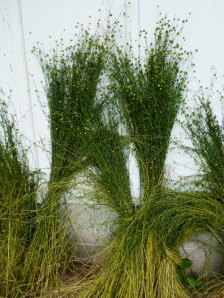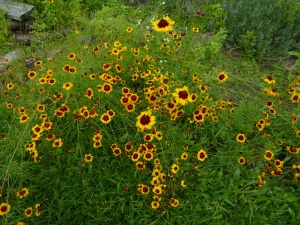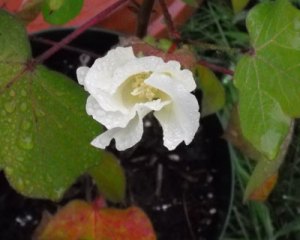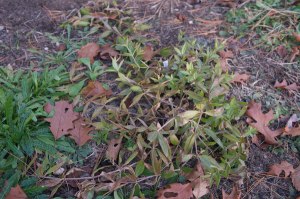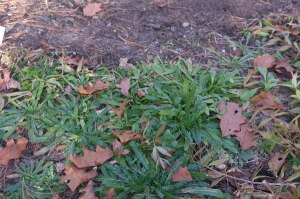
First Cotton Seedlings
This is the second year (third for flax growing) of my project to produce cloth from my garden.
As I live in Ontario, Canada (not exactly in the heart of cotton country), I plant cotton seeds indoors well before the local growing season begins. Last year my cotton plants stayed in pots outside all summer and came indoors again in the autumn so the bolls could continue to ripen.
Four days ago I planted some of the seed saved from last year and today some have already germinated! I’m sure they were slower last year, but this time they are sitting on a heat mat which really speeds up germination (for seeds that like warm soil).
I have four varieties planted: Pima, Upland, Green and Brown.
If enough seeds germinate, I’ll try planting some out in the garden and depending on their progress, cover them with a hoop shelter in the fall if they need a little extra time to mature. Cotton has up to a 160 day growing cycle, which is a challenge, but the plants are attractive with lovely hibiscus-like blossoms. The fibre is fun to spin and, unlike flax, does not require a great deal of preparation.

Cotton spun on a spindle and plied on a wheel
Last summer I also grew my first Japanese Indigo plants and collected seed from a few plants that were brought indoors in the autumn at the blooming stage. It was hard to tell if the seed was maturing, or if the plants were just dying back, so I’ve put a few seeds between wet paper towels in a plastic tub to test their viability. They are starting to put out little shoots which is very promising.
If all goes well, I’ll be able to extract some indigo and dye a little of the cotton – adding blue to the natural colour pallet of white, green and brown.
The yarn shown was spun on my little takli spindle (shown) and then plied on my spinning wheel. It is not my home-grown cotton yet – I’m still practising with the cotton that came with the spindle from Joan Ruane. Many Thanks Joan!
Read Full Post »
